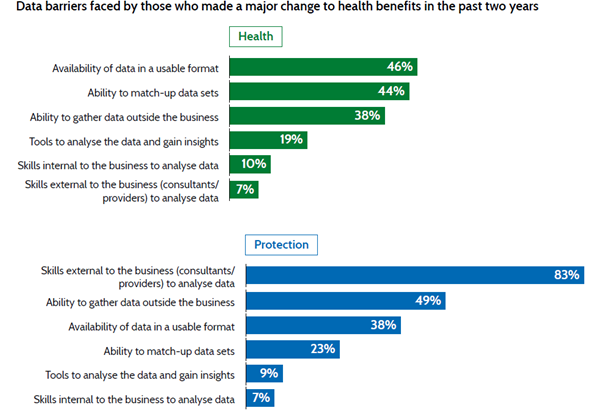Health-related benefits dominate employers’ programme changes
During the past two years, most employers (83%) have made major benefits changes.
Yet of that 83%, nearly three-quarters (73%) made changes relating to health benefits, protection benefits, mental or physical wellbeing.
The turbulence within healthcare over the past two years has been a major factor in causing employers to concentrate programme changes on health-related benefits.
In REBA’s Benefits Design Research 2024, more than two-thirds (69%) of respondents said employee wellbeing would affect their benefits offering across 2024-25.
There has also been increasing demand for private medical insurance (PMI) and health cash-plans.
Figures from LaingBuisson’s Health Cover UK Data Insights Report (20th report) show that, despite high levels of medical inflation of between 12% and 15%, demand for company paid PMI schemes has increased.
It found that private medical cover accounted for £6.15bn of total market value by the end of 2023 – up 12.2% on a year earlier.
Of the 4.9 million PMI policyholders, 3.8 million were covered by a policy their employer had taken out.
Organisations are increasingly turning to private healthcare benefits, owing to dissatisfaction with NHS waiting times, which are potentially prohibiting both physically and mentally unwell employees from accessing timely treatment.
Employers are clearly turning to health and protection benefits to alleviate these issues,yet there are still notable barriers around the availability of data and the skill required for analysis.

Detailed analysis of claims rates and trends data is essential to the understanding of the effectiveness of health and protection benefits.
The Benefits Design Research 2025 found that employers are ambitious about their plans to use benefits data more effectively, to help seek approval for change and to steer future health and wellbeing strategy.







